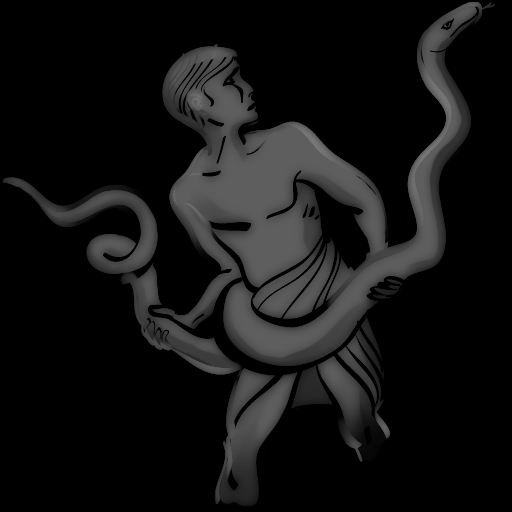Post by MoMo on Jun 9, 2012 12:13:34 GMT -6
Ajanta Caves
The Buddhist caves (Ajiṇṭhā leni; Marathi: अजिंठा लेणी) in Aurangabad district of Maharashtra, India are 30 rock-cut cave monuments which date from the 2nd century BCE to the 600 CE. The caves include paintings and sculptures considered to be masterpieces of Buddhist religious art (which depict the Jataka tales) as well as frescoes which are reminiscent of the Sigiriya paintings in Sri Lanka. The caves were built in two phases starting around 2nd century BCE, with the second group of caves built around 600 CE. It is a protected monument under the Archaeological Survey of India.
Since 1983, the Ajanta Caves have been a UNESCO World Heritage Site. The caves are located in the Indian state of Maharashtra, near Jalgaon, just outside the village of Ajinṭhā (
20°31′56″N 75°44′44″E). Caves are only about 59 kilometers from Jalgaon Railway station (on Delhi - Mumbai, Rail line of the Central railways, India); and 104 kilometers from Aurangabad (from Ellora Caves 100 Kilometers).
First Period
According to Spink (2006), the first phase was the construction of sanctuaries (known as chaytia-grihas) built during the period 100 BCE to 100 CE, probably under the patronage of the Satavahana dynasty (230 BCE - c. 220 CE) in the canyons of the Waghora River. The caves 9, 10, 12 and 15A were constructed during this period. Murals preserved from this time belong to the oldest monuments of painted art in India.
Second Period
Scholars disagree about the date of the Ajanta Caves' second period. For a time it was thought that the work was done over a long period from the fourth to the 7th century AD, but recently long-time researcher Walter M. Spink declared that most of the work took place over short time period, from 460 to 480 CE, during the reign of Emperor Harishena of the Vakataka dynasty. Some 20 cave temples were simultaneously created, for the most part viharas: monasteries with a sanctuary in the structure's rear centre. Each of cave temples seem to be patronised by influential authority, numerous best available artists have been involved in the work with fruitful rivalry between the neighbouring construction sites.
According to Spink, the Ajanta Caves appear to have been abandoned shortly after the fall of Harishena c. 480 CE. Since then, these temples have been abandoned and gradually forgotten. During the intervening centuries, the jungle grew back and the caves were hidden, unvisited and undisturbed.
Rediscovery
On 28 April 1819, a British officer for the Madras Presidency, John Smith, of the 28th Cavalry, while hunting tiger, accidentally discovered the entrance to one of the cave temples (Cave No. 10) deep within the tangled undergrowth. Exploring that first cave, long since a home to nothing more than birds and bats and a lair for other, larger, animals, Captain Smith scratched his name in on one of the pillars. Still faintly visible, it records his name and the date, April 1819. Since he stood on a five foot high pile of rubble collected over the years, the inscription is well above the eye-level gaze of an adult. Shortly after this discovery, the Ajanta Caves became renowned for their exotic setting, impressive architecture, historic artwork, and long-forgotten history.
Cave #1
The first cave was built on the eastern end of the horse-shoe shaped scarp. According to Spink, it is one of the latest caves to have begun on site and brought to near-completion in the Vākāţaka phase. Although there is no epigraphic evidence, it has been proposed that the Vākāţaka Emperor Harishena may have been the benefactor of this better-preserved cave. A dominant reason for this is that Harisena was not involved initially in patronizing Ajanta.
This cave has one of the most elaborate carvings on its facade with relief sculptures on entablature and ridges. There are scenes carved from the life of the Buddha as well as a number of decorative motifs. A two pillared portico, visible in the 19th-century photographs, has since perished. The cave has a front-court with cells fronted by pillared vestibules on either side. These have a high plinth level. The cave has a porch with simple cells on both ends. The absence of pillared vestibules on the ends suggest that the porch was not excavated in the latest phase of Ajanta when pillared vestibules had become a necessity and norm. Most areas of the porch were once covered with murals, of which many fragments remain. There are three doorways: a central doorway and two side doorways. Two square windows were carved between the doorways to brighten the interiors.
Each wall of the hall inside is nearly 40 feet (12 m) long and 20 feet (6.1 m) high. Twelve pillars make a square colonnade inside supporting the ceiling, and creating spacious aisles along the walls. There is a shrine carved on the rear wall to house an impressive seated image of the Buddha, his hands being in the 'dharmachakrapravartana mudra. There are four cells on each of the left, rear, and the right walls. The walls are covered with paintings in a fair state of preservation. The scenes depicted are mostly didactic, devotional, and ornamental. The themes are from the Jataka stories (the stories of the Buddha's former existences as Bodhisattva), the life of the Gautama Buddha, and those of his veneration.
Cave #2
Cave 2, adjacent to Cave 1, is known for the paintings that have been preserved on its walls, ceilings, and pillars. It looks similar to Cave 1 and is in a better state of preservation.
The facade
Cave 2 has a porch quite different from Cave one. Even the facade carvings seem to be different. The cave is supported by robust pillars, ornamented with designs. The size and ground plan have many things in common with the first cave.
The porch
The front porch consists of cells supported by pillared vestibules on both ends. The cells on the previously "wasted areas" were needed to meet the greater housing requirements in later years. Porch-end cells became a trend in all later Vakataka excavations. The simple single cells on porch-ends were converted into CPVs or were planned to provide more room, symmetry, and beauty.
The paintings on the ceilings and walls of this porch have been widely published. They depict the Jataka tales that are stories of the Buddha's life in former existences as Bodhisattva. The porch's rear wall has a doorway in the center, which allows entrance to the hall. On either side of the door is a square-shaped window to brighten the interior.
The hall
The hall has four colonnades which are supporting the ceiling and surrounding a square in the center of the hall. Each arm or colonnade of the square is parallel to the respective walls of the hall, making an aisle in between. The colonnades have rock-beams above and below them. The capitals are carved and painted with various decorative themes that include ornamental, human, animal, vegetative, and semi-divine forms.
The paintings
Paintings appear on almost every surface of the cave except for the floor. At various places the art work has become eroded due to decay and human interference. Therefore, many areas of the painted walls, ceilings, and pillars are fragmentary. The painted narratives of the Jataka tales are depicted only on the walls, which demanded the special attention of the devotee. They are didactic in nature, meant to inform the community about the Buddha's teachings and life through successive rebirths. Their placement on the walls required the devotee to walk through the aisles and 'read' the narratives depicted in various episodes. The narrative episodes are depicted one after another although not in a linear order. Their identification has been a core area of research since the site's rediscovery in 1819. Dieter Schlingloff's identifications have updated our knowledge on the subject.
Some believe that the art work has erroneously been alluded to as "fresco", rather than mural, and assert that the technique and process used to produce this kind of artwork is unlike any other artwork found in the art history of other civilizations, including within the history of South Asian art.
Cave #4
The Archeological Survey of India board outside the caves gives the following detail about cave 4 : "This is the largest monastery planned on a grandiose scale but was never finished.An inscription on the pedestal of the buddha's image mentions that it was a gift from a person named Mathura and paleographically belongs to 6 th century A.D. It consists of a verandah , a hypostylar hall, sanctum with an antechamber and a series of unfinished cells.The sanctum houses a colossal image of Lord buddha in preaching pose flanked by Bodhisattvas and celestial nymphs hovering above.The rear wall of the verandah contains the panel of Litany of Avalokiteśvara".








